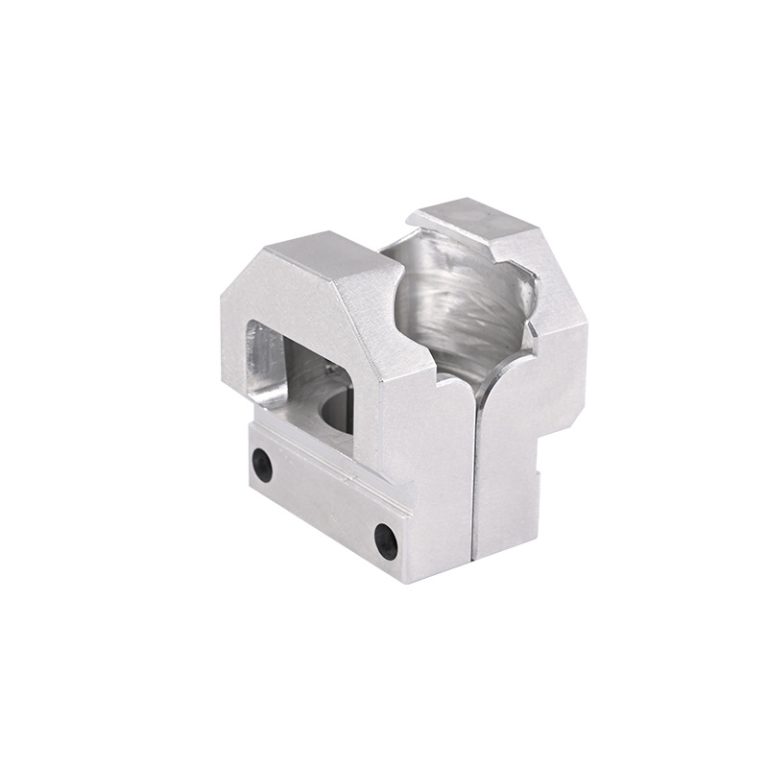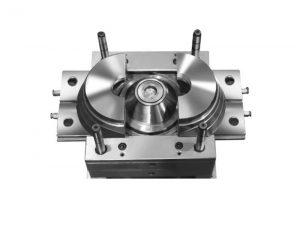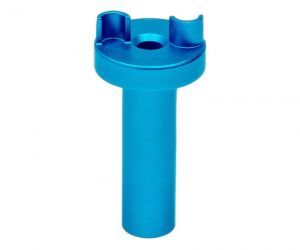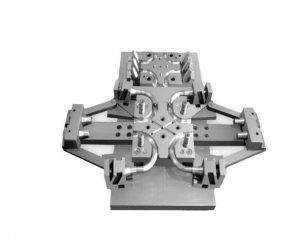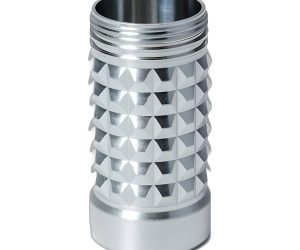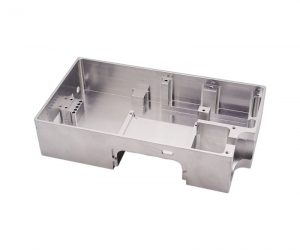1. Introduction: The Dawn of a Manufacturing Paradigm Shift
Additive manufacturing (AM), commonly known as 3D printing, is rewriting the rules of industrial production. Unlike traditional subtractive methods that carve objects from raw materials, AM constructs items layer by layer from digital models, enabling unprecedented design freedom and efficiency.
For instance, in the aerospace industry, traditional manufacturing methods often involve complex machining processes that result in significant material waste. A study by Airbus found that when manufacturing a titanium alloy component for an aircraft engine, traditional subtractive manufacturing wasted 95% of the raw material. In contrast, additive manufacturing reduced this waste to less than 10%, while also allowing for the creation of more complex geometries that improved the component's performance.
In the medical field, Stryker uses AM to produce patient - specific orthopedic implants. By scanning a patient's anatomy, they can create a custom implant that fits perfectly, reducing the need for post - operative adjustments and improving patient outcomes. This level of customization was nearly impossible with traditional manufacturing techniques.
2. Core Technologies: The Building Blocks of Additive Manufacturing
2.1 A Spectrum of AM Techniques for Diverse Needs
Additive manufacturing encompasses multiple technologies, each tailored to specific materials, precision, and scale. Here’s a breakdown of leading methods:
| Technology | Working Principle | Material Compatibility | Precision (Layer Thickness) | Ideal for |
| Fused Deposition Modeling (FDM) | Melts thermoplastic filaments (PLA, ABS) and extrudes layer - by - layer. | Plastics, composites | 50–400μm | Prototyping, low - cost parts, DIY projects |
| Stereolithography (SLA) | UV light cures liquid resin into solid layers for high - detail models. | Resins, elastomers | 10–100μm | Medical prototypes, jewelry, intricate designs |
| Selective Laser Melting (SLM) | High - energy lasers melt metal powders (titanium, stainless steel) for dense parts. | Metal alloys | 20–100μm | Aerospace components, medical implants |
| Binder Jetting | Binder agents bond powder particles (metal, sand), sintered for large - scale parts. | Metals, ceramics, sand | 100–300μm | Automotive castings, sand molds |
FDM, one of the most accessible AM methods, is popular for its simplicity and cost - effectiveness. A desktop FDM printer can be purchased for as low as a few hundred dollars, making it a favorite among hobbyists and educational institutions. For Yigu Technology example, in a high - school engineering class, students use FDM printers to create 3D - printed models of mechanical components to better understand engineering principles.
SLA offers exceptional surface finish and precision, making it suitable for applications where aesthetics and fine details matter. A study by a jewelry manufacturer found that SLA - printed prototypes reduced the time to market for new jewelry designs by 60%, as the high - precision models could be quickly reviewed and refined before production.
SLM is revolutionizing industries that demand high - strength, complex metal parts. Airbus has been using SLM to manufacture titanium alloy brackets for its aircraft. These brackets are not only 30% lighter than their conventionally - manufactured counterparts but also have improved fatigue resistance, leading to enhanced aircraft performance and safety.
Binder jetting is gaining traction in the automotive and foundry industries for its ability to produce large - scale parts. Volkswagen has explored binder jetting for manufacturing sand molds for casting engine blocks. This process reduces the lead time for mold production by 50% compared to traditional molding methods, enabling faster design iterations and production ramp - up.
2.2 The AM Production Pipeline: From Digital to Physical
- Design & Slicing: Engineers use CAD software (e.g., SolidWorks) to create 3D models, which are sliced into layers by tools like Cura, defining parameters like layer thickness and support structures. In a product development project for a consumer electronics company, SolidWorks was used to design a new smartphone case. The 3D model was then imported into Cura, where the engineers set the layer thickness to 100μm to balance print speed and surface quality. Support structures were automatically generated for the overhanging parts of the design to ensure successful printing.
- Additive Fabrication: Printers deposit material layer by layer. For Yigu Technology example, an SLM machine builds a titanium aerospace bracket at 20μm layer thickness, while an FDM printer constructs a plastic prototype at 200μm for faster turnaround. A leading aerospace company uses an SLM machine to build critical engine components. The high - energy laser precisely melts the titanium powder layer by layer, creating a part with a density of over 99.9%, meeting the stringent requirements for aerospace applications. Meanwhile, a startup developing a new consumer product uses an FDM printer to quickly produce prototypes at a layer thickness of 200μm. This allows them to rapidly test different design concepts before finalizing the design.
- Post - Processing: Finishing steps refine quality: vapor smoothing reduces SLA surface roughness from Ra 20μm to Ra 1μm, and heat treatment enhances SLM metal durability. A dental laboratory that uses SLA - printed dental models applies vapor smoothing to improve the surface finish of the models. This not only makes the models more accurate for dental analysis but also improves the fit of dental restorations. In the case of SLM - printed metal parts for a medical device, heat treatment is carried out to relieve internal stresses and improve the material's mechanical properties, ensuring the long - term reliability of the implants.
3. Disrupting Industries: Where Additive Manufacturing Shines
3.1 Aerospace & Defense: Lightweight Innovation for Critical Systems
The aerospace and defense sectors are at the forefront of adopting additive manufacturing, driven by the need for lightweight, high - performance components. The cost of launching payloads into space or the operational efficiency of military aircraft is directly related to the weight of the vehicle. AM technologies offer the ability to create complex, lattice - structured parts that reduce weight without sacrificing strength.
GE Aviation’s LEAP Engine Nozzles are a prime example of AM’s impact in aerospace. By merging over 150 traditional parts into a single component using Selective Laser Melting (SLM), GE achieved a 15% weight reduction and an 8% improvement in fuel efficiency, according to NASA (2023). This not only enhances the engine's performance but also reduces operating costs over its lifespan. In traditional forging processes, creating such a complex, integrated part would have been nearly impossible, as it would require multiple sub - components to be fabricated and assembled, leading to higher material waste, longer production times, and potentially more points of failure.
Relativity Space’s Terran 1 Rocket represents another milestone. As the world’s first nearly fully 3D - printed rocket (with 85% of components produced via AM), it achieved a 40% reduction in part count. This not only simplifies the manufacturing process but also reduces the number of potential failure points in the rocket's design. The use of AM allowed Relativity Space to rapidly prototype and iterate on the rocket's design, getting the rocket from concept to launch in a much shorter time frame compared to traditional aerospace manufacturing methods. For Yigu Technology instance, the company was able to use its large - scale Stargate 3D printers to build the rocket's large - scale structures, such as the fuel tanks and engine components, in a single print job, eliminating the need for complex assembly processes. This approach also enabled the use of advanced materials and geometries that are difficult to achieve with traditional manufacturing, leading to a more efficient and reliable rocket design.
3.2 Healthcare: Personalized Solutions for Complex Needs
In healthcare, additive manufacturing is revolutionizing patient care by enabling personalized solutions. The human body is unique, and medical devices that can be customized to fit individual patients often lead to better treatment outcomes.
Stryker's use of SLM to fabricate cobalt - chromium knee implants is a significant advancement. These implants feature trabecular structures that mimic natural bone density. By doing so, they increase osseointegration, the process by which the implant bonds with the surrounding bone, by 30%. The use of FDA - approved Ti - 6Al - 4V ELI alloy ensures biocompatibility and long - term stability. Traditional manufacturing methods struggle to create such complex, patient - specific geometries. For example, casting or machining techniques may not be able to replicate the intricate trabecular patterns accurately, leading to implants that do not integrate as well with the patient's bone tissue, potentially increasing the risk of implant failure or the need for revision surgeries.
Bioprinting, a subset of additive manufacturing, is also making remarkable progress. In 2022, Dutch researchers used AM to create functional liver tissue. This breakthrough has far - reaching implications for drug testing and organ transplantation. By creating liver tissue in the lab, pharmaceutical companies can reduce drug testing costs by 80% compared to traditional animal trials. The ability to create functional liver tissue also brings us one step closer to the possibility of printing replacement organs for transplantation. In the past, the shortage of donor organs has been a major bottleneck in organ transplantation, and bioprinting offers a potential solution to this problem by allowing for the creation of personalized organs that are less likely to be rejected by the patient's immune system.
3.3 Automotive: From Prototyping to End - Use Parts
The automotive industry is leveraging additive manufacturing for both rapid prototyping and the production of end - use parts. The need for fast design iterations and sustainable manufacturing practices is driving the adoption of AM in this sector.
Tesla, a leader in electric vehicle manufacturing, uses Fused Deposition Modeling (FDM) - printed ABS prototypes to cut car component validation time by 70%. This allows the company to quickly test and refine designs for components such as battery brackets. In a rapidly evolving industry like electric vehicles, where new technologies and design concepts are constantly emerging, the ability to iterate quickly on component designs is crucial. For example, Tesla can use 3D - printed prototypes to test different bracket designs for their battery packs, ensuring optimal fit, strength, and heat dissipation, all while reducing the time and cost associated with traditional prototyping methods that may involve the creation of expensive molds or tooling.
BMW is also making strides in sustainable production with additive manufacturing. The company uses recycled nylon via Selective Laser Sintering (SLS) for 3D - printed interior parts. This not only cuts the carbon footprint by 25% but also achieves a tensile strength of 85 MPa, which is comparable to injection - molded equivalents. By using recycled materials in 3D printing, BMW is reducing its environmental impact while still maintaining the high - quality standards expected in automotive manufacturing. Additionally, the ability to 3D - print interior parts allows for greater design flexibility, enabling BMW to create unique, ergonomic, and aesthetically pleasing components that enhance the overall user experience in their vehicles.
4. AM vs. Traditional Manufacturing: A Game-Changing Comparison
The contrast between additive manufacturing and traditional manufacturing methods is stark, with AM offering distinct advantages across multiple dimensions:
| Criteria | Additive Manufacturing | Traditional Manufacturing |
| Design Freedom | No geometric limits (lattices, hollow structures) | Constrained by molds/tools |
| Material Waste | 5 - 10% (recyclable powder/filament) | 30–70% (chips/scraps) |
| Tooling Costs | Low (\(0 - \)1k for support materials) | \(10k–\)50k per mold |
| Production Time | 24–72 hours | 2–4 weeks |
| Cost Scaling | Linear cost increase | Exponential cost increase |
4.1 Design Freedom: Unleashing Creativity
AM breaks free from the shackles of traditional manufacturing constraints. In traditional methods, complex geometries often require multiple molds and extensive machining, leading to high costs and design compromises. For Yigu Technology example, creating a lattice - structured component for shock absorption in a traditional manufacturing setup would be extremely challenging. The use of molds in traditional casting or injection - molding processes limits the complexity of the internal structures that can be produced.
In contrast, additive manufacturing allows for the creation of intricate lattice structures with ease. These lattices can reduce the weight of a component while maintaining its structural integrity, as seen in the aerospace industry. A study by Airbus found that 3D - printed lattice - structured brackets reduced weight by 40% compared to their conventionally - manufactured counterparts, without sacrificing strength. This is because AM builds parts layer by layer, following a digital model, enabling the realization of any design that can be conceived in a CAD software.
4.2 Material Waste: A Sustainable Advantage
Traditional manufacturing, such as machining, often involves removing large amounts of material to achieve the desired shape. In a metal - machining process for a complex part, up to 70% of the raw material can end up as chips or scraps. This not only increases material costs but also has a significant environmental impact.
Additive manufacturing, on the other hand, is a much more material - efficient process. With AM, materials are deposited only where they are needed, resulting in material waste as low as 5 - 10%. In metal additive manufacturing, excess powder can often be recycled and reused, further reducing waste. For instance, in the production of dental crowns using SLA, the resin is precisely cured layer by layer, minimizing material waste. The ability to use recyclable materials like PLA in FDM also contributes to AM's sustainable manufacturing profile.
4.3 Tooling Costs: Lower Barriers to Entry
Tooling costs in traditional manufacturing can be a major deterrent, especially for small - scale production or product prototyping. Creating a mold for injection - molding can cost anywhere from \(10,000 to \)50,000, depending on the complexity of the part. This high cost is due to the need for precision machining of the mold itself, which often involves multiple steps and high - quality materials.
In additive manufacturing, the tooling costs are significantly lower. In most cases, the only additional cost is for support materials, which are used to hold the part in place during printing and can cost as little as \(0 - \)1,000. For example, when a startup wants to create a new consumer product prototype, they can use an FDM printer to produce the part without having to invest in expensive molds. This makes AM an attractive option for small - and medium - sized enterprises (SMEs) that may not have the capital to invest in traditional tooling.
4.4 Production Time: Accelerating Innovation
Traditional manufacturing processes typically involve multiple steps, including mold making, machining, and assembly. For a medium - complexity automotive part, the production time can range from 2 - 4 weeks. This long lead time is due to the need to coordinate between different manufacturing processes and the time required for each step, such as the curing time for molds or the machining time for complex geometries.
Additive manufacturing can significantly reduce production time. A 3D - printed part can often be produced within 24 - 72 hours, depending on its size and complexity. In the development of a new smartphone accessory, an AM - printed prototype can be created in a matter of days, allowing for rapid design iterations. This speed to market is a major advantage for companies looking to quickly introduce new products or respond to changing customer demands.
4.5 Cost Scaling: Economies of Flexibility
In traditional manufacturing, the cost per unit decreases as the production volume increases, but setting up the production line for high - volume production can be extremely costly. For example, in the automotive industry, setting up a production line for a new model can cost billions of dollars. However, once the line is set up, the cost per unit for large - scale production can be relatively low.
In additive manufacturing, the cost per unit has a more linear relationship with the production volume. While the cost per unit may not decrease as significantly with large - scale production as in traditional manufacturing, AM offers the advantage of cost - effective small - batch production. A company that wants to produce a limited - edition run of a luxury product can use AM to manufacture the parts without incurring the high setup costs associated with traditional manufacturing. This flexibility in production volume makes AM suitable for a wide range of production needs, from one - off prototypes to small - scale production runs.
8. Conclusion: The Unstoppable Rise of Additive Manufacturing
Additive manufacturing is not just a technological upgrade—it’s a transformative revolution reshaping how we design, produce, and distribute goods. By enabling unprecedented design freedom, material efficiency, and rapid iteration, it empowers industries to solve complex challenges, from lightweight aerospace components to personalized medical devices.
As AI, sustainable materials, and hybrid manufacturing drive the next wave of innovation, AM is poised to become the cornerstone of the fourth industrial revolution. The question is no longer whether to adopt additive manufacturing, but how industries can leverage its potential to stay competitive in a rapidly evolving global market.
In the coming years, we can expect to see AM penetrate deeper into mainstream manufacturing, with more companies integrating it into their production lines. This will lead to a shift in the global manufacturing landscape, with a greater emphasis on local production, customization, and on - demand manufacturing. Small - and medium - sized enterprises will have greater access to manufacturing capabilities, enabling them to compete on a more level playing field with larger corporations.
FAQs
- Q: What are the most common materials used in additive manufacturing?
- A: Common materials include plastics like PLA and ABS in Fused Deposition Modeling (FDM), resins for Stereolithography (SLA), and metal powders such as titanium and stainless steel for Selective Laser Melting (SLM). There are also ceramics, composites, and even some specialized materials for bioprinting like hydrogels.
- Q: Is additive manufacturing suitable for large - scale production?
- A: While it has been traditionally more associated with prototyping and small - batch production, some AM technologies like binder jetting are being increasingly used for large - scale production. However, factors such as print speed and cost per unit still need to be optimized for high - volume, large - scale manufacturing in many cases.
- Q: How does additive manufacturing impact the environment?
- A: AM is generally more environmentally friendly than traditional manufacturing as it reduces material waste significantly, often to as low as 5 - 10%. Additionally, the ability to use recycled materials in some AM processes further contributes to its sustainable profile. It can also reduce the need for long - distance transportation if production can be localized, thus cutting down on carbon emissions related to logistics.
